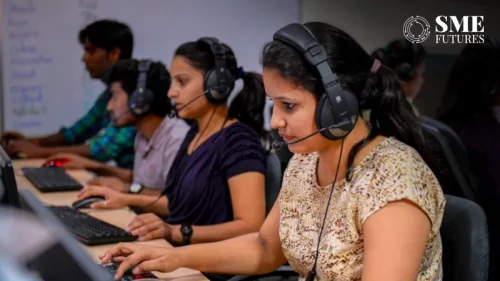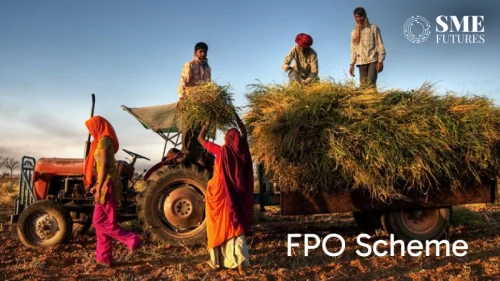Pallavi Singh, Vice President of Super Plastronics Pvt Ltd (SPPL), Westinghouse TV’s Indian brand licensee, believes that raw material prices for the TV manufacturing sector will not fall in the near future.
We don’t see a quick fix, but we do expect the rates to stabilise by the end of 2022, she says.
After the automobile industry, the domestic appliance industry, including TV manufacturing, has faced challenges related to semiconductor shortages, supply constraints, and price increases. In response, the television manufacturing industry has urged the government to implement a slew of measures to improve the prospects of the industry.
Furthermore, there is uncertainty regarding the new variants of COVID-19. The advent of Omicron is increasing the pressure on TV brands as they prepare for what 2022 has in store for them.
Pallavi Singh answers a few questions about the current state of the Indian TV manufacturing segment and what lies ahead for the industry in an interview with SME Futures.
Edited Excerpts:
What is the current scenario for TV manufacturing in India, is it a rewind of 2020?
The current scenario for manufacturing is on an upside from 2020, since we all have learnt to adapt to the various complexities that this pandemic may dish out to us. It is not possible to make a steel cut plan, but we have managed to build a framework and are trying to operate within it.
Also, with the new variant Omicron looming ahead of us, we have tried to prepare ourselves to the extent possible for the disruptions that might come our way.
And what sort of challenges is the sector facing, except for inflation? Is it hurting demand?
Except for inflation, the major issue on hand is the supply chain and the increasing costs with respect to the same. A minimal increase in the cost is something that one accounts for and is willing to bear. However, the increase in these costs is almost a 1,000 per cent and one does not have any option but to transfer these costs to the end consumer. As a result, consumers may be hesitant to buy products which cost considerably less a few months ago.
Is your company ordering extra supplies (by volume) fearing the disruptions that might be caused due to Omicron? Please tell us the details.
With the market being unpredictable at the moment, it is difficult to plan about what quantum of supplies should be stored. Also, other factors like lockdowns happening even for e-commerce deliveries and the shutting of retail stores, hamper our ability to factor in sales for these areas and work within the projections. We are currently playing on the blindside and maintaining stock at an optimal level.
On which markets are you dependent for imports of raw materials, as there has been a steep rise in the prices of the raw materials (ICs or open cells). Going ahead, is it going to be the same scenario?
The steep price rise of raw materials has not yet stabilised and is not expected to do so either till the end of 2022. The worldwide shortage of semiconductors has affected all, barring none and we foresee no immediate solution to this. We expect these rates to only stabilise towards the end of 2022, if at all.
Recently, Piyush Goyal urged the electronics industry to aim for local value addition in TV manufacturing (from 28 per cent to 43.7 per cent) and requested for plans on how to achieve this goal. What should be the measures and suggestions in your opinion?
We fully agree with him and would also encourage the government to introduce PLI’s for the consumer durables industry as well so that our dependency on foreign nations can be reduced.
The amount of investments linked to setting up base for televisions is monumental, even if the government was to enable subsidies on the same. We would also urge the government to reduce the GST on all televisions from 28 per cent to 18 per cent so that the GST loss can be covered, and we can utilise the same towards developing the industry.
The stay-at-home situations have increased the demand for televisions, but mobile content consumption has also increased significantly. What are your thoughts on the impact of these turn of events on the TV sector?
This is true for both sectors. When at home, consumers tend to prefer larger screens not only for entertainment but for work purposes as well. Especially since e-meetings are now a large part of our way of working, consumers might fix cameras on their TV’s to be able to bring a conference room feel to their meetings.
For 2022, what trends are going to be prominent in the Indian TV market and what are your views on consumer behaviour this year?
The industry is trending towards larger and smarter screens while also keeping in mind the strain that this could cause on the pockets of everyone. India has always been a saving economy and this pandemic has taught one to be ready for any situation especially in monetary terms. Hence affordable televisions are the way forward.
Televisions are no longer considered a luxury and especially since one may need to stay in the confines of one’s home for an unprecedented amount of time, the consumers are investing in good but affordable televisions, even those from the tier 2 & tier 3 cities.
In terms of Westinghouse, what is the roadmap ahead, and what are your expansion and investment plans?
With Westinghouse, we plan to launch premium televisions in the upcoming year, and we are aiming to capture a good share of the market due to Amazon’s penetration in rural areas as well. An investment of upwards of 100 crores is planned in terms of the development of new products and for a facility for this brand.











